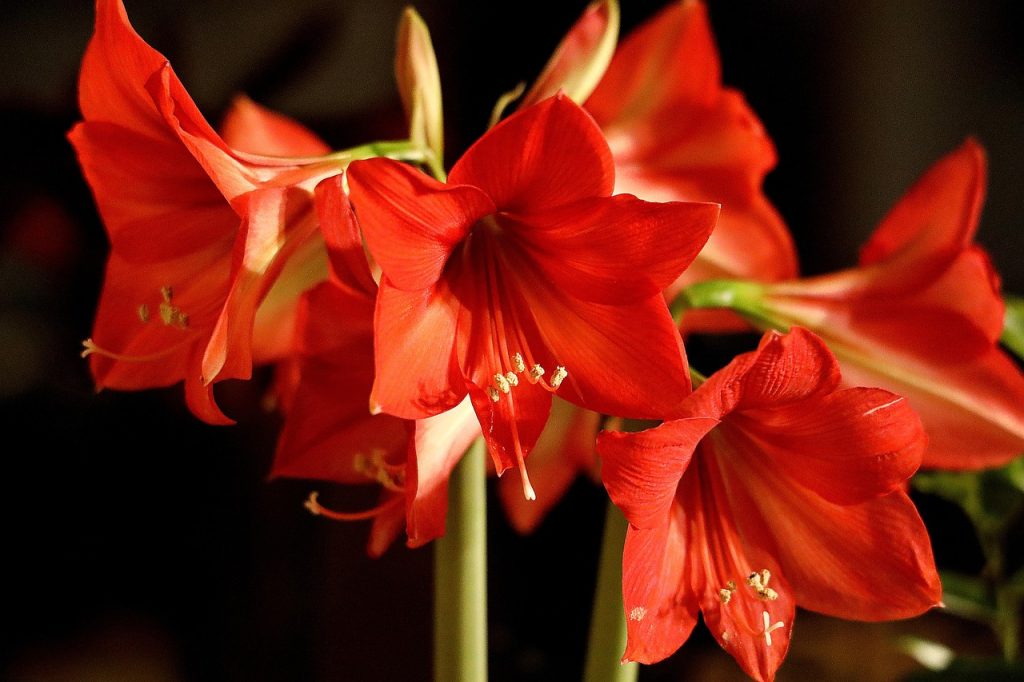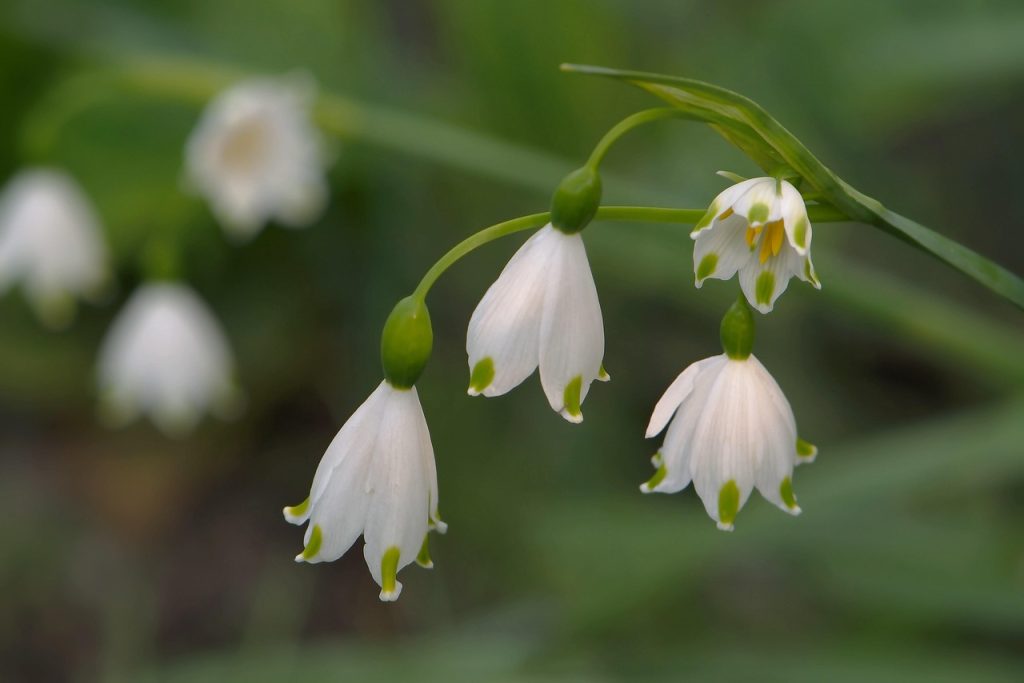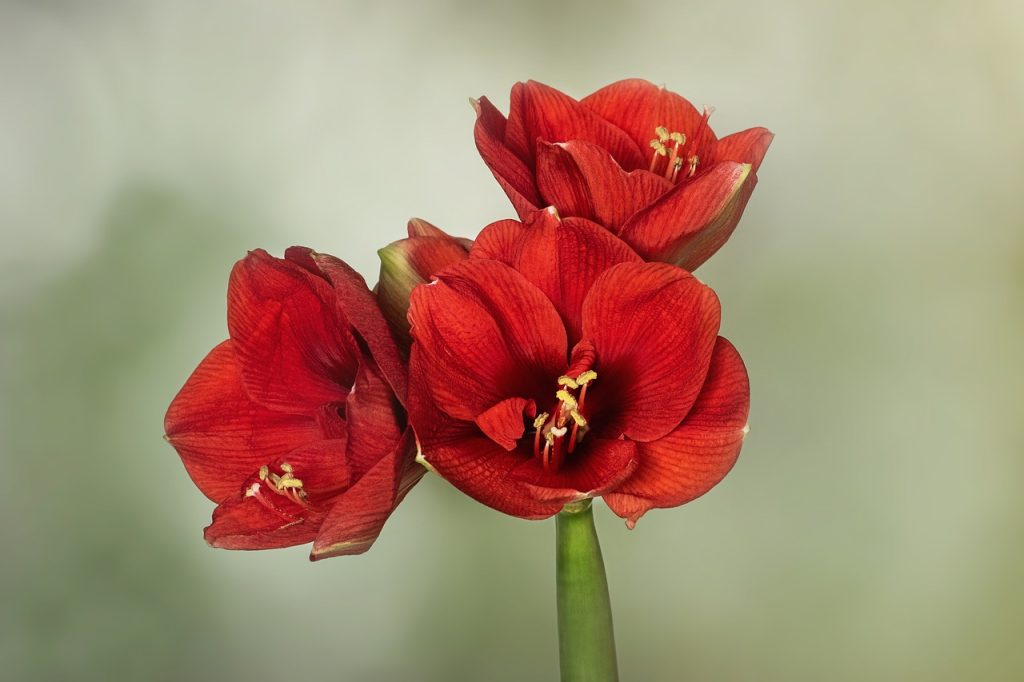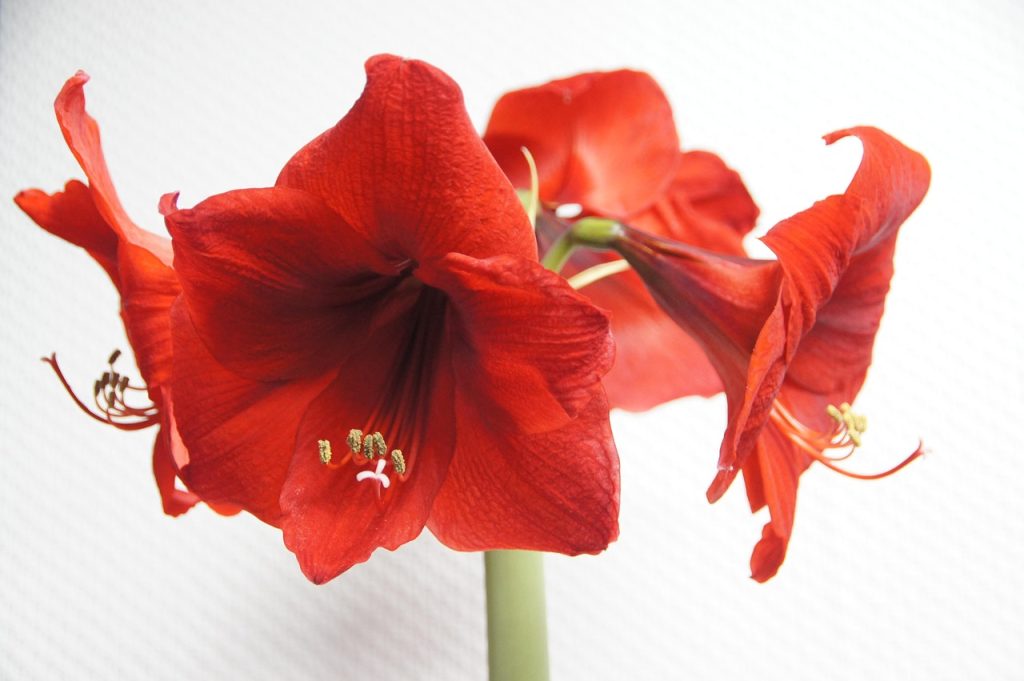The amaryllis plant, with its bold, trumpet-shaped blooms and vibrant colors, is a favorite among gardeners and indoor plant enthusiasts. Whether you’re drawn to its festive red and white flowers during the holidays or its year-round potential as a houseplant, learning to care for amaryllis plant is rewarding and surprisingly beginner-friendly. This guide covers everything you need to know, including planting, watering, lighting, fertilizing, and coaxing those stunning blooms year after year. Let’s dive into the world of amaryllis care and help your plant thrive!

What Is an Amaryllis Plant?
Amaryllis (Hippeastrum spp.) is a bulbous plant native to South America, known for its large, showy flowers that bloom in shades of red, pink, white, orange, or bi-color patterns. Often gifted as a holiday plant, amaryllis can bloom indoors in winter and be maintained as a perennial with proper care. Its long, strap-like leaves and sturdy flower stalks make it a striking addition to any home or garden.
Why Grow Amaryllis?
- Easy to grow, even for beginners.
- Produces dramatic, long-lasting blooms (4-6 weeks).
- Can rebloom annually with minimal effort.
- Versatile for indoor or outdoor settings (in warm climates).
Real-Life Example: My neighbor, a first-time gardener, received an amaryllis bulb as a Christmas gift. With basic care, she enjoyed a burst of red blooms by February and has kept it reblooming every year since!
Choosing the Right Amaryllis Bulb
The foundation of successful amaryllis plant care starts with selecting a healthy bulb. Here’s how to pick a winner:
- Size Matters: Larger bulbs (10-12 inches in circumference) produce more flowers and stronger stalks. Smaller bulbs may bloom less reliably.
- Check for Quality: Look for firm, heavy bulbs with no soft spots, mold, or damage. Healthy bulbs may have dry, papery outer layers.
- Pre-Planted Kits: Many amaryllis come in kits with soil and a pot, perfect for beginners. Ensure the bulb isn’t shriveled or overly dry.
Pro Tip: If buying online, order from reputable nurseries to avoid low-quality bulbs. I’ve had great luck with bulbs from local garden centers, where I can inspect them in person.

Planting Your Amaryllis
Proper planting sets the stage for healthy growth and vibrant blooms. Follow these steps to get started:
Materials Needed
- Amaryllis bulb
- Well-draining potting mix (e.g., peat-based with perlite)
- A pot with drainage holes (6-8 inches wide for one bulb)
- Saucer or tray for drainage
Planting Steps
- Choose the Right Pot: Select a pot 1-2 inches wider than the bulb. Amaryllis prefers snug containers, as overly large pots can lead to excessive leaf growth over flowers.
- Prepare the Soil: Use a well-draining mix. I mix 2 parts potting soil with 1 part perlite for aeration.
- Plant the Bulb: Place the bulb with the pointed end up, leaving the top third exposed above the soil. Press soil firmly around the bulb.
- Water Sparingly: Water just enough to moisten the soil. Overwatering at this stage can cause bulb rot.
- Place in a Warm Spot: Set the pot in a warm (70-75°F), bright location to encourage sprouting.
Real-Life Example: Last winter, I planted an amaryllis bulb in a 7-inch terracotta pot. Within 6 weeks, it produced two stunning flower stalks, each with four bright pink blooms, thanks to a snug pot and minimal initial watering.
Lighting Requirements for Amaryllis
Light is critical for amaryllis growth and blooming. Here’s how to get it right:
- During Growth: Place in bright, indirect light (e.g., near a south-facing window). Direct sunlight can scorch leaves, but too little light causes weak, leggy growth.
- Blooming Phase: Once flowers open, move to slightly dimmer light to extend bloom life. A spot with morning sun and afternoon shade works well.
- Outdoor Option: In USDA Zones 9-11, amaryllis can grow outdoors in partial shade. In cooler climates, keep them indoors or move pots outside after the last frost.
Pro Tip: Rotate the pot every few days to ensure even light exposure, preventing the stalk from leaning toward the light. I learned this after my first amaryllis tilted dramatically toward a window!
Watering Your Amaryllis
Proper watering is key to caring for amaryllis plant successfully. Overwatering is a common mistake, so follow these guidelines:
- Initial Watering: After planting, water lightly until the bulb sprouts (about 1-2 weeks). Keep soil barely moist.
- Growth Phase: Once leaves and stalks appear, water when the top inch of soil feels dry. I check weekly and water thoroughly, letting excess drain.
- Blooming Phase: Maintain consistent moisture but avoid soggy soil. Use a saucer to catch drips, but empty it to prevent root rot.
- Dormancy: Reduce watering as leaves yellow and die back, stopping completely during the dormant period (more on this later).
Real-Life Example: A friend overwatered her amaryllis, leading to a mushy bulb. After switching to a “less is more” approach, her next bulb thrived, producing vibrant blooms for weeks.

Fertilizing for Healthy Growth
Fertilizing supports strong leaves and future blooms. Here’s how to feed your amaryllis:
- When to Fertilize: Start when the bulb sprouts and continue every 2-4 weeks during active growth (spring/summer).
- Type of Fertilizer: Use a balanced, water-soluble fertilizer (e.g., 10-10-10 or 20-20-20) or one higher in phosphorus (e.g., 10-20-10) to encourage blooms.
- Application: Dilute fertilizer to half-strength and apply when watering. I use a liquid houseplant fertilizer, mixing 1 teaspoon per gallon of water.
- During Dormancy: Stop fertilizing when the plant enters its rest period (fall/winter).
Pro Tip: Avoid over-fertilizing, which can burn roots or promote leafy growth over flowers. I learned this after overfeeding an amaryllis that grew massive leaves but no blooms!
Encouraging Amaryllis to Rebloom
One of the joys of amaryllis care is coaxing it to bloom year after year. Here’s how to achieve those repeat performances:
Post-Bloom Care
- Remove Spent Flowers: Cut faded flowers at the base of the stalk, leaving the green stalk and leaves to photosynthesize.
- Continue Care: Water and fertilize regularly, treating the plant like a houseplant through summer. Move outdoors in warm weather if desired.
- Build Bulb Energy: Healthy leaves store energy in the bulb for next year’s blooms. Keep the plant in bright light and avoid cutting leaves prematurely.
Inducing Dormancy
- Timing: In late summer or early fall (August-September), stop watering and let leaves yellow naturally.
- Storage: Once leaves die back, cut them off and store the bulb in its pot or a paper bag in a cool (50-55°F), dark, dry place for 8-12 weeks.
- Rest Period: This mimics the plant’s natural cycle, triggering future blooms.
Restarting Growth
- After Dormancy: In late fall or early winter, repot the bulb in fresh soil (or refresh the top inch of soil) and resume watering sparingly.
- Place in Light: Return to a warm, bright spot. Blooms typically appear 6-8 weeks later.
Real-Life Example: My first amaryllis rebloomed after I stored it in my basement for 10 weeks. By December, it rewarded me with a stunning double bloom, a true holiday treat!
Common Pests and Problems
Amaryllis is relatively pest-resistant, but issues can arise. Here’s how to handle them:
Pests
- Spider Mites: Look for webbing or speckled leaves. Wipe leaves with a damp cloth or use insecticidal soap.
- Mealybugs: White, cottony spots on leaves or stems. Dab with alcohol-soaked cotton swabs.
- Fungus Gnats: Common in overwatered soil. Let soil dry out and use sticky traps.
Problems
- Bulb Rot: Caused by overwatering. Ensure good drainage and avoid soggy soil.
- No Blooms: Often due to insufficient light, over-fertilizing, or skipping dormancy. Adjust care and ensure a rest period.
- Leggy Growth: Too little light or high temperatures. Move to brighter light and keep temperatures below 75°F.
Pro Tip: Inspect your plant weekly to catch issues early. I once saved an amaryllis from spider mites by catching them early and wiping leaves daily.

Amaryllis Care Table
| Care Aspect | Recommendation | Frequency/Timing |
|---|---|---|
| Light | Bright, indirect light; dimmer for blooms | Daily; rotate every few days |
| Watering | Top inch dry; sparingly during dormancy | Weekly during growth; none in dormancy |
| Fertilizer | Balanced (10-10-10) or high-phosphorus | Every 2-4 weeks during growth |
| Temperature | 70-75°F (growth); 50-55°F (dormancy) | Year-round |
| Dormancy | Cool, dark, dry storage | 8-12 weeks in fall |
Outdoor Amaryllis Care (Warm Climates)
In USDA Zones 9-11, amaryllis can grow outdoors year-round. Here’s how to care for them:
- Planting: Plant bulbs in well-draining soil, 12 inches apart, with the top third exposed.
- Location: Choose partial shade to avoid leaf scorch. A spot under a tree with dappled light works well.
- Watering: Water regularly during growth, reducing in fall to encourage dormancy.
- Winter Care: In mild winters, mulch around bulbs to protect them from rare frosts.
Real-Life Example: A friend in Florida planted amaryllis bulbs in her garden bed. They bloom reliably every spring, adding pops of color to her tropical landscape.
Read More: Care for a Jade Plant
Propagating Amaryllis
Amaryllis can be propagated through offsets (baby bulbs) or seeds, though offsets are easier for beginners:
- Offsets: Small bulbs form at the base of the mother bulb. Gently separate them during repotting, plant in small pots, and care for them like mature bulbs. They may take 2-3 years to bloom.
- Seeds: Pollinate flowers and collect seeds after pods dry. Sow in moist soil, but expect 3-5 years for blooms. This is best for patient gardeners!
Pro Tip: I’ve grown offsets from my amaryllis, and while it takes time, it’s exciting to see new plants emerge from a single bulb.

FAQs
Water when the top inch of soil is dry during active growth (weekly, typically). Reduce watering as leaves die back, and stop during dormancy.
Lack of blooms may result from insufficient light, no dormancy period, or over-fertilizing with nitrogen. Ensure bright light, a rest period, and balanced fertilizer.
In Zones 8 or colder, grow amaryllis indoors or move pots outside in summer and back indoors before frost. Outdoor planting works only in Zones 9-11.
Blooms last 4-6 weeks with proper care. Moving the plant to dimmer light once flowers open can extend their life.
Yes, as long as it’s 1-2 inches wider than the bulb. Refresh the soil every 1-2 years to maintain nutrients and drainage.
Caring for an amaryllis plant is a delightful journey that rewards you with stunning blooms and year-round beauty. By providing the right light, water, and nutrients, and mastering the dormancy cycle, you can enjoy this plant’s vibrant flowers for years. Whether you’re growing it indoors for holiday cheer or outdoors in a warm climate, these care amaryllis plant tips will help you succeed. Start your amaryllis adventure today and watch your home or garden come alive with color!
Thank you for such an informantive site. I have succesfully kept my amaryliss for at least two winters and have just brought it inside for the decompression. I’m in zone 5/6 so they come in for the rest and rebloom. I’ve been concerned because this one seems to be ready to burst it’s pot! Now I know I should take it out and repot into a slightly larger one and how to do so. After the leaves die back and its had it’s rest, I’ll repot and bring it back to the light. With such good guidance, I’ll add some more this winter.
Thanks & happy blooms ahead!